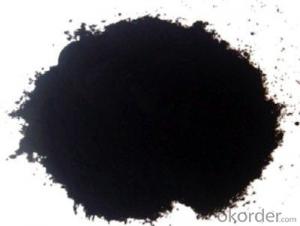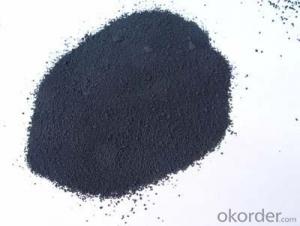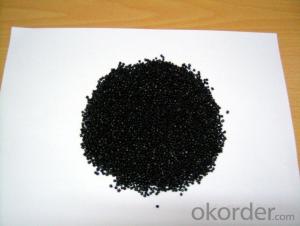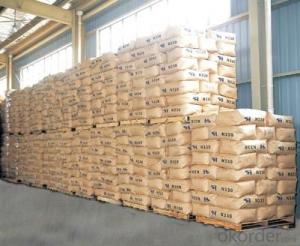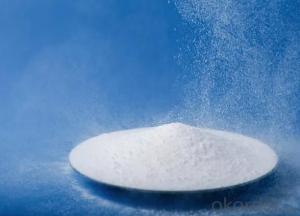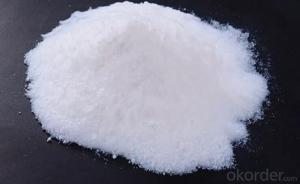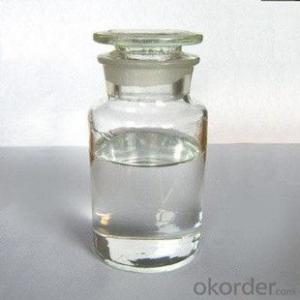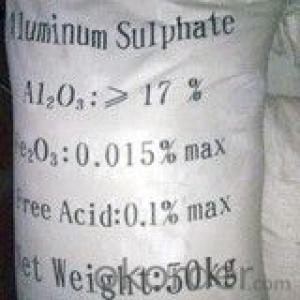Carbon Black N326
- Loading Port:
- Qingdao
- Payment Terms:
- TT OR LC
- Min Order Qty:
- -
- Supply Capability:
- 20000 m.t./month
OKorder Service Pledge
OKorder Financial Service
You Might Also Like
Specifications of Carbon Black N326
1. Wet process
2. Highl stretching intensity, highly resisting avulsion
High strength
3. ISO9001
4. SGS INSPECTION
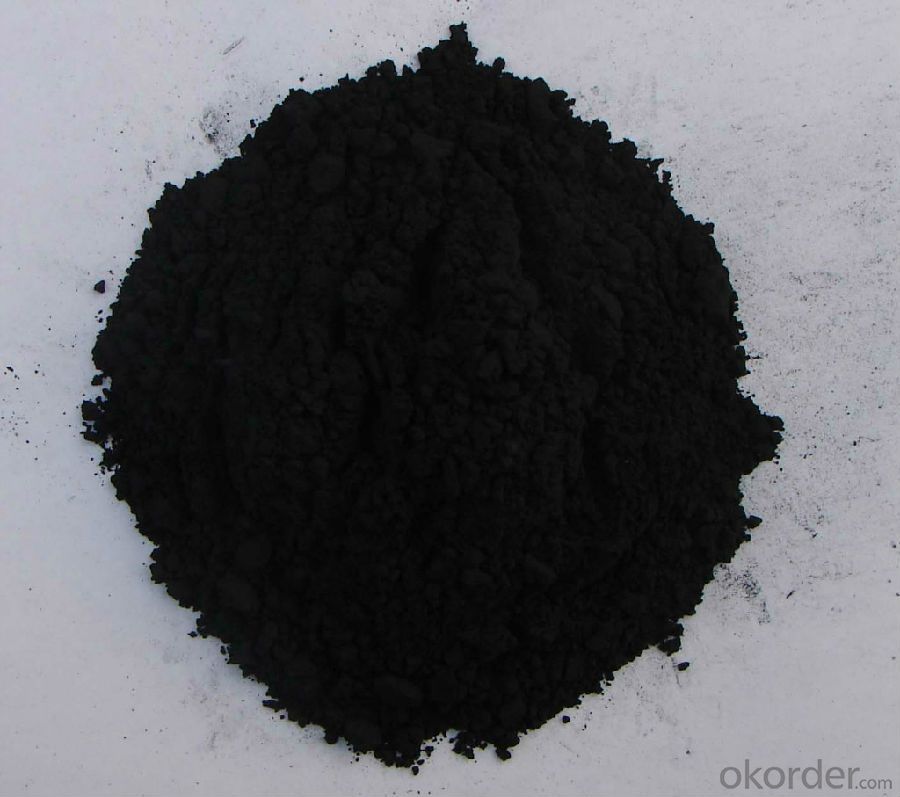
PRODUCT INTRODUCTION OF N-326
1. Package
1.1 The packages of 20Kgs, which were made of PP material or Kraft papers .
1.2 The packages of 500kgs /1000kgs, which were made of PP material
1.3 Special specifications on the package are acceptable.
2.The Physical & Chemical property.
Grainy black amorphous solids, odorless, specific weight 1.82, burning point beyond 400°C, water insoluble, non-poisonous, stable chemical property.
3.The Perniciousness of carbon-black.
Nonflammable, explosibility, corrosive, toxicant, radioactive, dangerous nature.
4. Production standards.
We strictly fulfill the National Standard GB3778-2003 to produce rubber used carbon-black
5. Application.
It is used as the Strengthening agents and the filling agents for the production of the tread rubber for tires of highly strength, low-heated (including all-terrain vehicle tires), also fits for conveyor belts, airproof products, and other rubber products of high quality.
6.Function
The rubber fills with N326 has highly stretching intensity, highly resisting avulsion, highly wear resistance, and highly strength. Compared with other High abrasion furnace black (HAF), N326 has better tensile stretch, but weaker on the stress at definite elongation, and nearly the same stretching intensity. However, it’s hard for N326 to disperse when it used in rubber, and it would lead to lowing the stretching intensity, the wear resistance intensity, and the fatigability.

- Q:Seems intuitive that it wouldn't, but I dunno the qualitative difference between activation energy & Gibbs free energy. I'M TOO LAZY TO GOOGLE I GOTS STUFF TO DO
- A catalyst can change the activation energy not the Gibbs energy. The Gibbs energy is the energy difference between the initial state and final state. A catalyst cannot change that. Imagine you are driving from school to home. How you drive do not change the height difference between the school and your home. However, a catalyst can change your path which can change the routine you drive from school to home. So if there is a hill in between your school and you home, you have the choice to drive through it or drive around. Here is a picture: upload.wikimedia.org/wikipedia/co... A catalyst can change the height of the barrier, but cannot alter the initial or final state.
- Q:What is the catalyst condition in the chemical equation?
- On the middle of the equal sign or arrow above ah ~
- Q:Chemical catalyst system baa?
- Can speed up or slow down the reaction rate without participating in the reaction of the material
- Q:in acid-catalyzed reaction,there are some books show the acid catalyst as H+ and there are some show it as H3O+ .Are they the same?
- Short=yes they are. Long version Traditionally, acids were defined to be compounds that produce H+ ions when dissoved in water (Arrhenius theory). But this definition is limited to acids that can be dissolved in water. Br?nsted-Lowry then formed a definition which states that acids are compounds which donates a protons or H+ ions. If u think about it, a H+ ion is practically a proton. a proton with no electron outer shell is far too reactive to stay in its current state. thus it will form a bond with H2O to form H3O+ Because of this, acid catalysts are supose to be H3O+ instead of H+. But since it is more convinient to use H+, the form of writing H+ remained instead....... and yes...... the scientists were lazy......
- Q:The catalyst can change the chemical reaction process, why is it wrong?
- Clear catalyst is to change the reaction rate, and some of the catalyst in the reaction is to speed up the reaction rate, and some reactions in the catalyst is to slow down the reaction rate. The catalyst changes the rate of chemical reaction and can not be said to change the course of the reaction
- Q:How does the catalyst affect chemical balance? Why the catalyst has no effect on the chemical equilibrium, for v-t diagram
- The mechanism of the catalyst is to affect the reaction activation energy in the reaction. The positive catalyst reduces the activation energy required for the reaction and increases the proportion of the activated molecules, thus reducing the reaction time.
- Q:Does the catalyst participate in chemical reactions?
- The catalyst does not participate in the chemical reaction, it only plays an auxiliary role.
- Q:Just something I've always wondered about...
- transition okorder /... for ex-- X (one reactant) + catalyst(transition element) ------X.catalyst(intermediate unstable compound) X.catalyst + Y (other reactant) --------XY(product) + catalyst how the change in oxidation state of transition elements helps the reacton through the formation of intermediates may be seen from reaction in between SO2 and O2 to form SO3 in presence of V2O5 ... V2O5 + SO2 ------V2O4 + SO3 2V2O4 + O2 ------2V2O5 in the above reaction vanadium changes its oxidation state from +5 to +4 and again to +5.. another example is reaction in between iodide and persulphate ions in presence of Fe(III) as catalyst... 2I(-) + S2O8(2-) ---------I2 + 2SO4(2-) (Fe(III) is present as catalyst) the reaction is believed to take place as follows: 2Fe(3+) + 2I(-) ------2Fe(2+) + I2 2Fe(2+) + S2O8(2-) ------2Fe(3+) + 2SO4(2-) (3)in number of cases transition elements provide a suitable large surface area with free valencies on which reactants are absorbed ...as a result concentration of reactants on surface of catalysts increases..hence rate of reaction increases...this is known as adsorption theory.... according to adsorption theory : there are free valencies on surface of solid transition metals because of the incomplete d-subshelll.. so the mechanism of catalysis involve followin five steps: (1) diffusion of reactant molecules towards surface of catalyst... (2) adsorption of reactant molecules on surface of catalyst by forming loose bonds with catalyst due to free valencies... (3)occurence of chemical reactions between reactant and catalyst forming an intermediate.. (4)desorption of product molecules from surface due to its lack of affinity for the catalyst surface thereby making the surface free for fresh adsorption of reactant molecules... (5)diffusion of product molecules away from surface of catalyst...
- Q:What suitable catalysts can I use for the reaction between Hydrochloric acid and zinc metal?
- catalysts are substances that alter the rate of a reaction.a suitable catalyst would be finely divided platinum.
- Q:Does all chemical reactions have a catalyst?
- Not some reaction without catalyst
1. Manufacturer Overview |
|
|---|---|
| Location | |
| Year Established | |
| Annual Output Value | |
| Main Markets | |
| Company Certifications | |
2. Manufacturer Certificates |
|
|---|---|
| a) Certification Name | |
| Range | |
| Reference | |
| Validity Period | |
3. Manufacturer Capability |
|
|---|---|
| a)Trade Capacity | |
| Nearest Port | |
| Export Percentage | |
| No.of Employees in Trade Department | |
| Language Spoken: | |
| b)Factory Information | |
| Factory Size: | |
| No. of Production Lines | |
| Contract Manufacturing | |
| Product Price Range | |
Send your message to us
Carbon Black N326
- Loading Port:
- Qingdao
- Payment Terms:
- TT OR LC
- Min Order Qty:
- -
- Supply Capability:
- 20000 m.t./month
OKorder Service Pledge
OKorder Financial Service
Similar products
New products
Hot products
Related keywords
